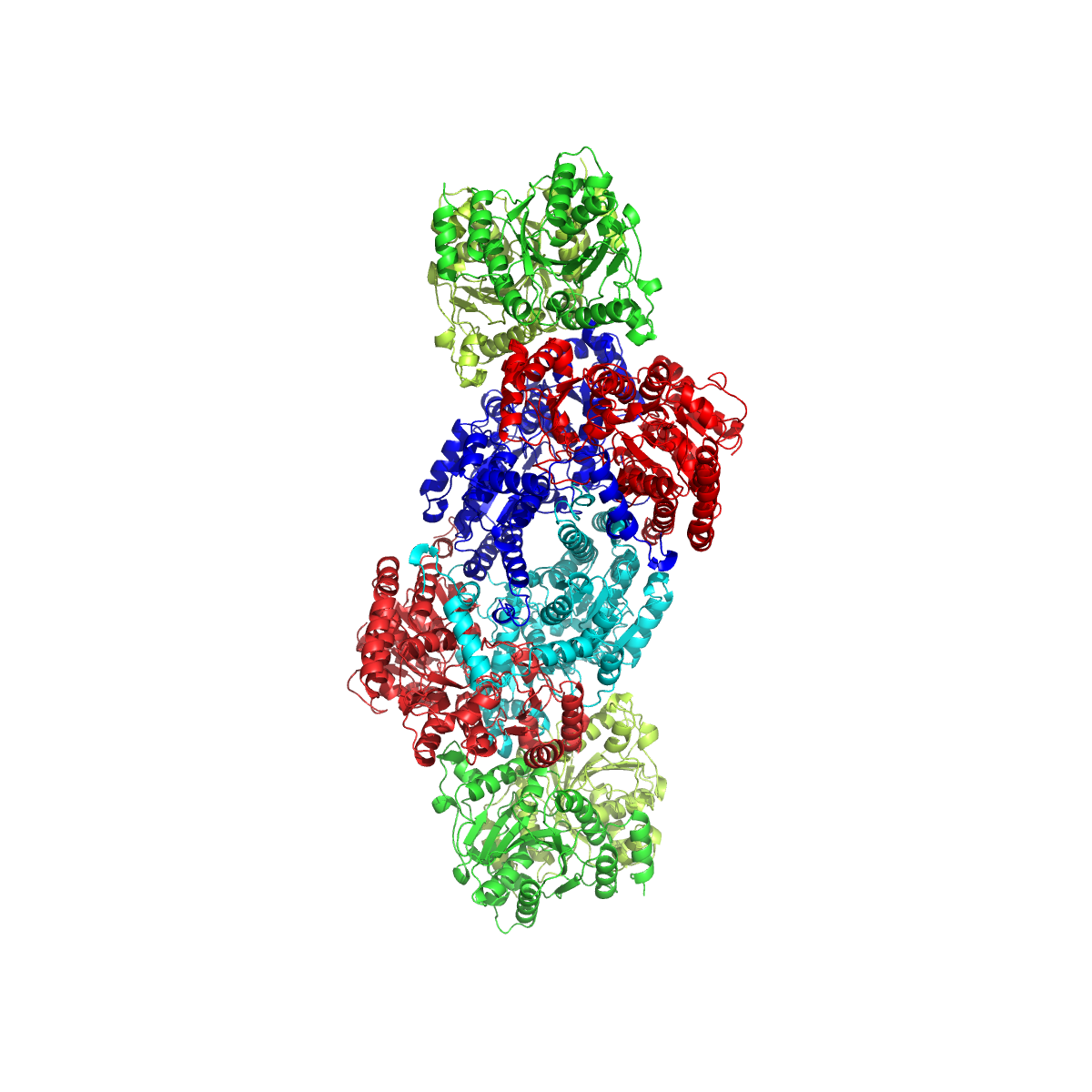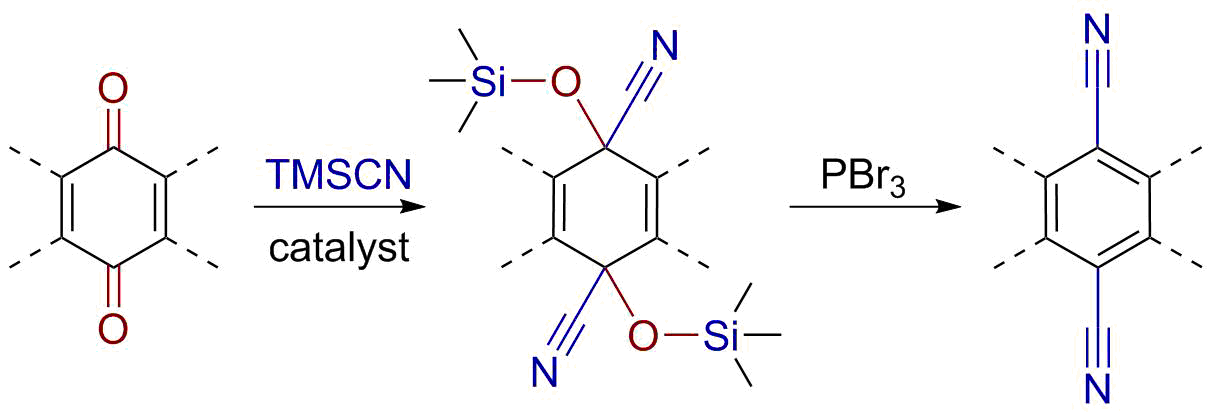|
Abiological Nitrogen Fixation Using Homogeneous Catalysts
Abiological nitrogen fixation describes chemical processes that fix (react with) N2, usually with the goal of generating ammonia. The dominant technology for abiological nitrogen fixation is the Haber process, which uses iron-based heterogeneous catalysts and H2 to convert N2 to NH3. This article focuses on homogeneous (soluble) catalysts for the same or similar conversions. Transition metals Vol'pin and Shur An early influential discovery of abiological nitrogen fixation was made by Vol'pin and co-workers in Russia in 1970. Aspects are described in an early review: "using a non-protic Lewis acid, aluminium tribromide, were able to demonstrate the truly catalytic effect of titanium by treating dinitrogen with a mixture of titanium tetrachloride, metallic aluminium, and aluminium tribromide at 50 °C, either in the absence or in the presence of a solvent, e.g. benzene. As much as 200 mol of ammonia per mol of was obtained after hydrolysis.…" These results led to ... [...More Info...] [...Related Items...] OR: [Wikipedia] [Google] [Baidu] |
Photochemistry
Photochemistry is the branch of chemistry concerned with the chemical effects of light. Generally, this term is used to describe a chemical reaction caused by absorption of ultraviolet (wavelength from 100 to 400 Nanometre, nm), visible light, visible (400–750 nm), or infrared radiation (750–2500 nm). In nature, photochemistry is of immense importance as it is the basis of photosynthesis, vision, and the formation of vitamin D with sunlight. It is also responsible for the appearance of DNA mutations leading to skin cancers. Photochemical reactions proceed differently than temperature-driven reactions. Photochemical paths access high-energy intermediates that cannot be generated thermally, thereby overcoming large Activation energy, activation barriers in a short period of time, and allowing reactions otherwise inaccessible by thermal processes. Photochemistry can also be destructive, as illustrated by the photodegradation of plastics. Concept Grotthuss–Dra ... [...More Info...] [...Related Items...] OR: [Wikipedia] [Google] [Baidu] |
Transition Metal Dinitrogen Complex
Transition metal dinitrogen complexes are coordination compounds that contain transition metals as ion centers the Nitrogen, dinitrogen molecules (N2) as ligands. Historical background Transition metal complexes of N2 have been studied since 1965 when the first complex was reported by Allen and Senoff. This Diamagnetism, diamagnetic complex, Pentaamine(nitrogen)ruthenium(II) chloride, [Ru(NH3)5(N2)]2+, was synthesized from hydrazine hydrate and ruthenium trichloride and consists of a [Ru(NH3)5]2+ centre attached to one end of N2. The existence of N2 as a ligand in this compound was identified by IR spectrum with a strong band around 2170–2100 cm−1. In 1966, the molecular structure of [Ru(NH3)5(N2)]Cl2 was determined by Bottomly and Nyburg by X-ray crystallography. The dinitrogen complex ''trans''-[IrCl(N2)(PPh3)2] is made by treating Vaska's complex with aromatic acyl azides. It has a planar geometry. The first preparation of a metal-dinitrogen complex using dinitro ... [...More Info...] [...Related Items...] OR: [Wikipedia] [Google] [Baidu] |
Nitrogenase
Nitrogenases are enzymes () that are produced by certain bacteria, such as cyanobacteria (blue-green bacteria) and rhizobacteria. These enzymes are responsible for the reduction of nitrogen (N2) to ammonia (NH3). Nitrogenases are the only family of enzymes known to catalyze this reaction, which is a step in the process of nitrogen fixation. Nitrogen fixation is required for all forms of life, with nitrogen being essential for the biosynthesis of molecules (nucleotides, amino acids) that create plants, animals and other organisms. They are encoded by the Nif genes or homologs. They are related to protochlorophyllide reductase. Classification and structure Although the equilibrium formation of ammonia from molecular hydrogen and nitrogen has an overall negative enthalpy of reaction ( \Delta H^ = -45.2 \ \mathrm \, \mathrm \; \mathrm ), the activation energy is very high ( E_\mathrm = 230-420 \ \mathrm \, \mathrm ). Nitrogenase acts as a catalyst, reducing this energy barrie ... [...More Info...] [...Related Items...] OR: [Wikipedia] [Google] [Baidu] |
Nitriles
In organic chemistry, a nitrile is any organic compound that has a functional group. The name of the compound is composed of a base, which includes the carbon of the , suffixed with "nitrile", so for example is called "propionitrile" (or propanenitrile). The prefix ''cyano-'' is used interchangeably with the term ''nitrile'' in industrial literature. Nitriles are found in many useful compounds, including methyl cyanoacrylate, used in super glue, and nitrile rubber, a nitrile-containing polymer used in latex, latex-free laboratory and medical gloves. Nitrile rubber is also widely used as automotive and other seals since it is resistant to fuels and oils. Organic compounds containing multiple nitrile groups are known as cyanocarbons. Inorganic compounds containing the group are not called nitriles, but cyanides instead. Though both nitriles and cyanides can be derived from cyanide salts, most nitriles are not nearly as toxic. Structure and basic properties The N−C−C geome ... [...More Info...] [...Related Items...] OR: [Wikipedia] [Google] [Baidu] |
Lithium Hydride
Lithium hydride is an inorganic compound with the formula Li H. This alkali metal hydride is a colorless solid, although commercial samples are grey. Characteristic of a salt-like (ionic) hydride, it has a high melting point, and it is not soluble but reactive with all protic organic solvents. It is soluble and nonreactive with certain molten salts such as lithium fluoride, lithium borohydride, and sodium hydride. With a molar mass of 7.95 g/mol, it is the lightest ionic compound. Physical properties LiH is a diamagnetic and an ionic conductor with an electric conductivity gradually increasing from at 443 °C to 0.18 Ω−1cm−1 at 754 °C; there is no discontinuity in this increase through the melting point. The dielectric constant of LiH decreases from 13.0 (static, low frequencies) to 3.6 (visible-light frequencies). LiH is a soft material with a Mohs hardness of 3.5. Its compressive creep (per 100 hours) rapidly increases from 100% at 475 ... [...More Info...] [...Related Items...] OR: [Wikipedia] [Google] [Baidu] |
Tris(trimethylsilyl)amine
Tris(trimethylsilyl)amine is the simplest tris(trialkylsilyl)amine which are having the general formula (R3Si)3N, in which all three hydrogen atoms of the ammonia are replaced by trimethylsilyl groups (-Si(CH3)3). Tris(trimethylsilyl)amine has been for years in the center of scientific interest as a stable intermediate in chemical nitrogen fixation (i. e. the conversion of atmospheric nitrogen N2 into organic substrates under normal conditions). Production Early attempts to prepare tris(trimethylsilyl)amine from ammonia and trimethylchlorosilane (TMS-Cl) were unsuccessful even at temperatures of 500 °C and in the presence of the base pyridine. The reaction of ammonia and trimethylchlorosilane stops at the stage of the doubly silylated product bis(trimethylsilyl)amine (usually referred to as hexamethyldisilazane, HMDS). Tris(trimethylsilyl)amine is obtained by reaction of the sodium salt of hexamethyldisilazane - from hexamethyldisilazane and sodium amide or from hexameth ... [...More Info...] [...Related Items...] OR: [Wikipedia] [Google] [Baidu] |




